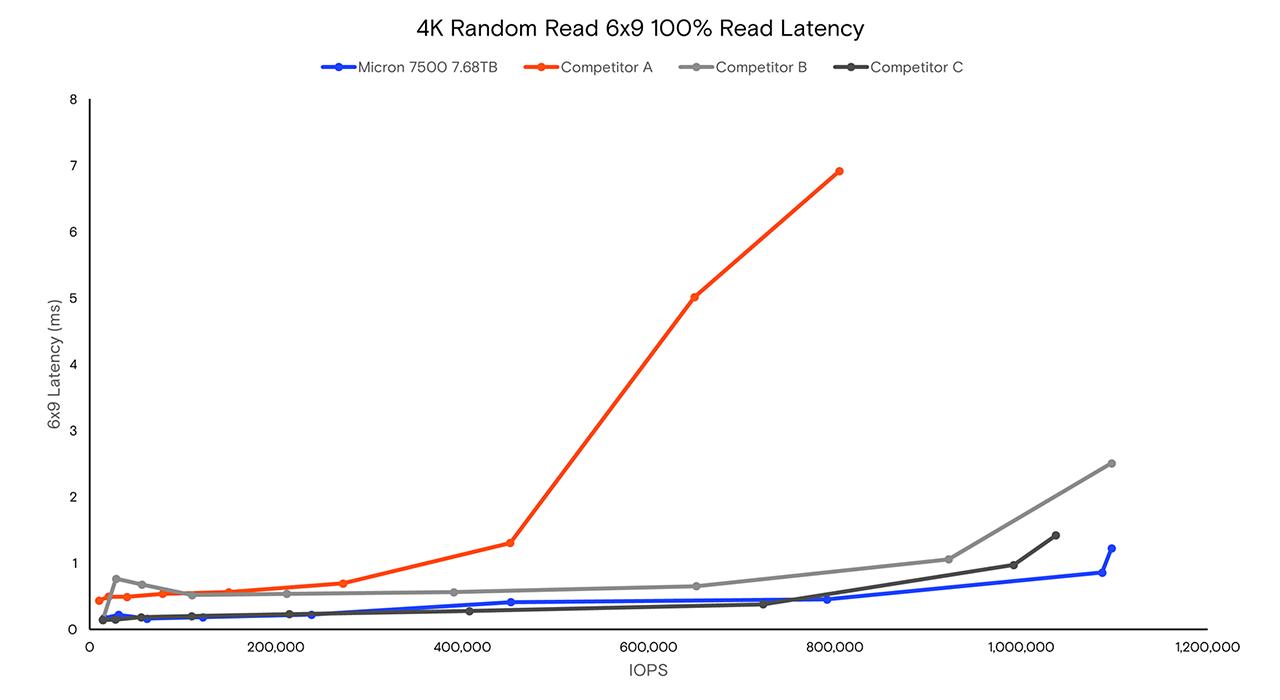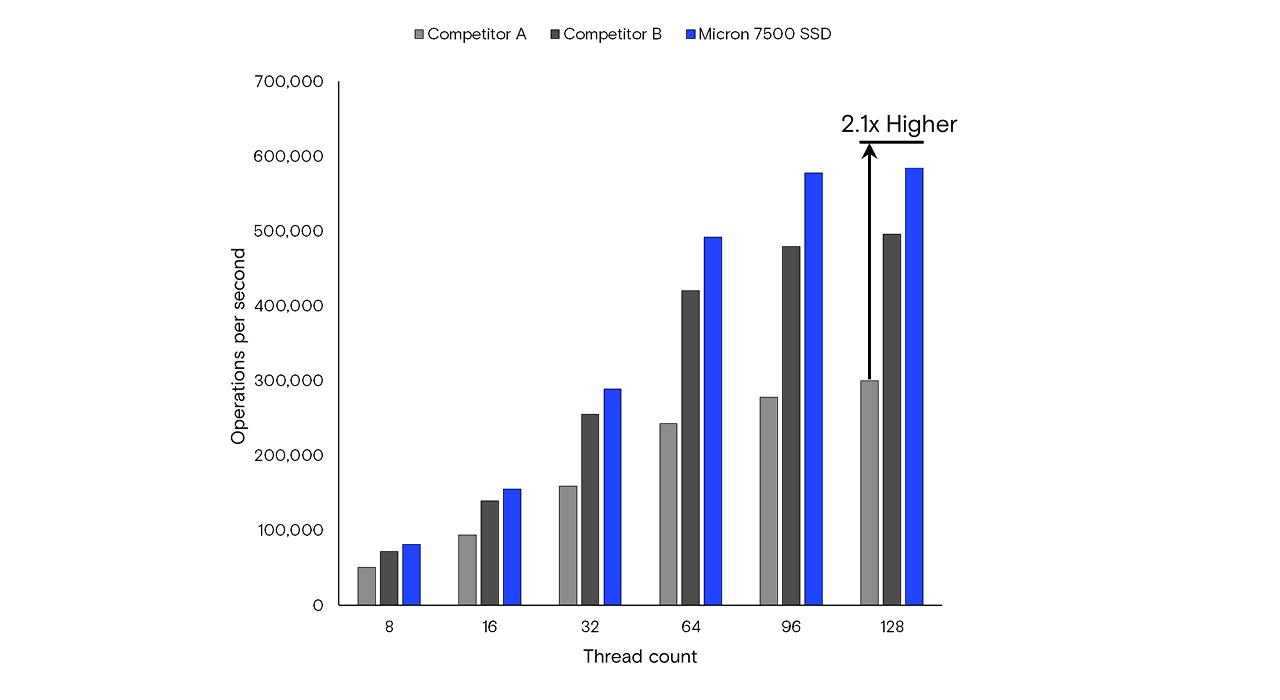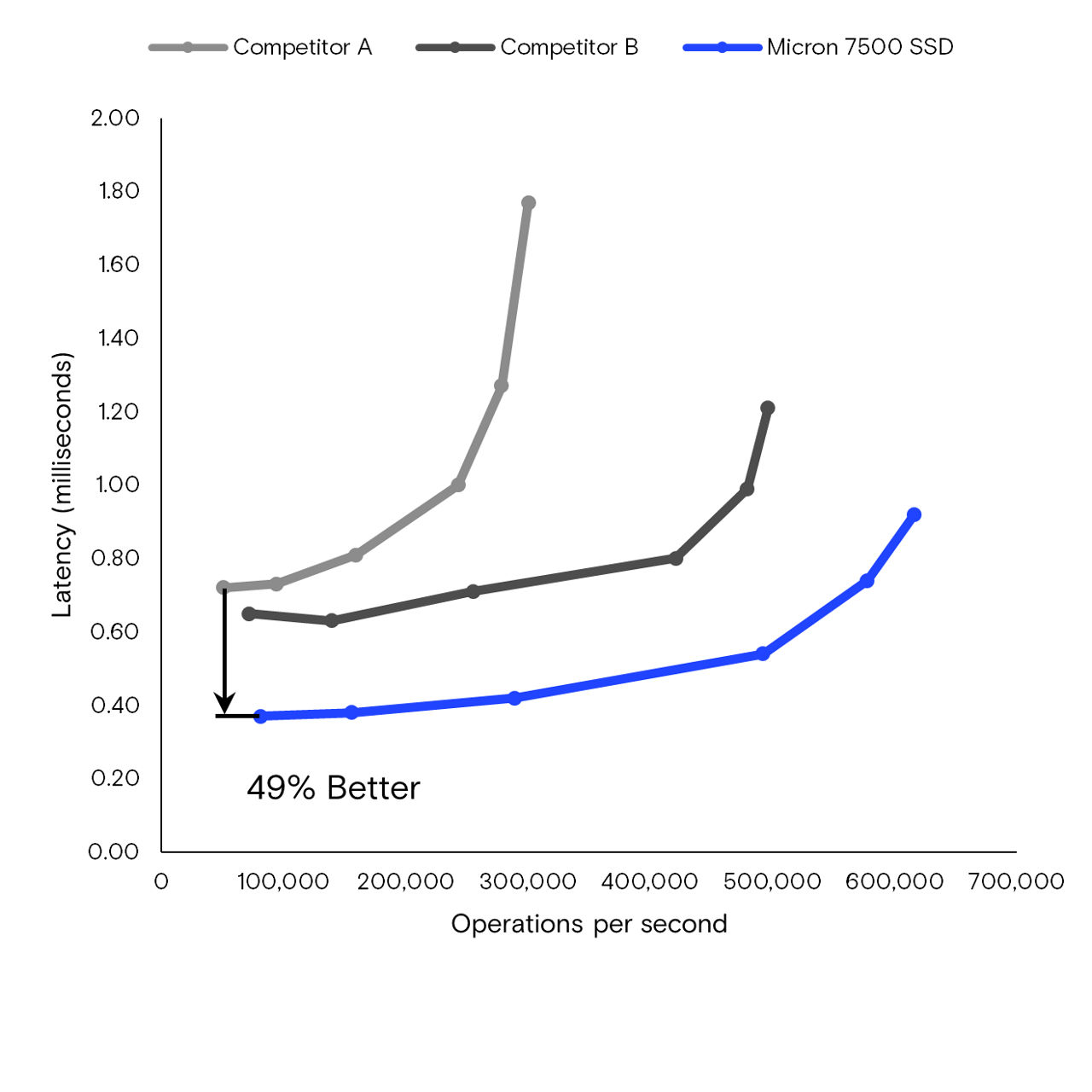Do you want to boost your data center performance and efficiency? Do you want to enjoy the benefits of OCP 2.0 standards and 232-layer NAND flash technology? Do you want to experience sub-1 millisecond latency, 6x9s quality of service (QoS), and Gen4 speed that leaves the competition behind? If you answered yes to any of these questions, then you need the Micron 7500 NVMe SSD, the world’s most advanced mainstream SSD. Read on to learn everything you need to know about this amazing drive and how you can get it for your data center.
What makes the Micron 7500 NVMe SSD so special?
The Micron 7500 NVMe SSD is not just another SSD. It is a game-changer for data center storage, thanks to its innovative features and benefits that make it stand out from the crowd. For example:
- Taking advantage of Micron’s industry leading, cutting-edge 232-layer NAND flash to deliver outstanding low latency, below 1 millisecond (ms), and high performance for 6x9s QoS, which translates to reliable performance for your data center workloads.
- Offering wide Open Compute Project (OCP) standards support, efficiency and security in a U.3 form factor, enabling easy integration and management with OCP-compliant systems.
- Providing superior performance for workloads such as artificial intelligence (AI), databases, content delivery, real-time analytics, social media, cloud computing, and virtualization, accelerating your workloads and unleashing your data center potential.1
How does the Micron 7500 support OCP 2.0 standards?
The Micron 7500 SSD implements the OCP SSD 2.0 specification2 to provide intelligent management, performance optimization, seamless integration and error handling. Latency monitoring helps improve performance by enabling the tracking, diagnosis and remedying of latency issue.3
Additionally, administrative commands allow standardized control over functions such as namespaces and security, easily integrating with OCP-compliant management systems. Furthermore, the 7500 SSD’s error recovery and error injection features, compliant with OCP SSD 2.0, enable rapid recovery of the drive and simulation of errors commonly encountered in data centers.3
By supporting OCP 2.0 standards, the Micron 7500 NVMe SSD facilitates the adoption of data security, as well as broad interoperability with other OCP devices.
How does the Micron 7500 keep your data safe?
The Micron 7500 SSD helps keep your data safe with key security features that protect your data from unauthorized access or tampering.4 The Micron 7500 NVMe SSD offers:
- Digitally signed firmware: Authenticates SSD firmware prior to updating it, which prevents the loading of malicious firmware.
- Cryptographic erase: Allows for fast and secure sanitization of stored user data.
- Secure boot: Uses a chain of trust mechanism that validates each entity’s authenticity before execution, such as during power-on.
- Data-at-rest protection: Ensures protection of user data stored on NAND using state-of-the-art cryptographic algorithm AES-XTS-256.
- Security Protocol and Data Model (SPDM) 1.2: Supports SPDM 1.2 for attestation, allowing systems using the Micron 7500 NVMe SSD to cryptographically verify the identity and firmware integrity of the drive.
- Trusted Computing Group (TCG) Opal: Controls encryption of user data in self-encrypting drives (SED).
- Hardware security engines: Deploys encryption engines such as AES-256, RSA-4048, RSA-4096, and SHA-512 in select SSDs. These engines meet or exceed key security standards specified in the Commercial National Security Algorithm (CNSA) Suite document.
- Micron secure execution environment (SEE): Consists of a dedicated security microprocessor that is electrically isolated from other microprocessors within the SSD controller and SEE execution cannot be preempted by nonsecure code. This isolation significantly reduces the opportunity for the security functionality of the storage device to be accidentally or maliciously circumvented.
With available options for FIPS 140-3 Level 2 and TAA compliance for U.S. federal government procurement requirements, the Micron 7500 NVMe offers a secure drive for an open compute world.
How does the 7500 NVMe SSD performance best the competition?
Performance is one of the most important factors in data center storage. The Micron 7500 SSD is designed for applications that require low and consistent latency to enable fast, reliable responsiveness. Micron internal testing results show latency below 1 millisecond with 6x9s QoS in 4K 100% random read workloads. With latency reliably this low we are creating a new class of mainstream data center SSDs that our competition cannot match today1:

Below are some graphs from our internal testing, showing how our testing reveals how the Micron 7500 NVMe SSD outperforms its competitors in both 100% read and mixed workload performance and QoS, in a range of workloads and block sizes versus competitive SSDs:

Figure 1: 100% Random 6x9 100% read latency vs. top competitors
In RocksDB testing, against two leading competitors reveals some significant differences and demonstrates how the Micron 7500 SSD offers superior RocksDB performance for example:

Figure 2: RocksDB 4K random read while writing performance scaling by thread count vs. top competitors
The Micron 7500 SSD offers superior RocksDB 4KB block size performance (in both read and read while writing workloads) across all tested thread counts (8 to 128) with maximum performance advantages up to 2.1 times random read while writing performance in figure 2, above.
Tests also showed response time improvements are up to 49% better for read while writing workloads as shown in figure 3, below.

Figure 3: RocksDB application responsiveness vs. competition for 4KB random read while writing performance
As you can see from these results, the Micron 7500 NVMe SSD delivers substantial benefits for both read intensive and complex mixed workloads while also providing reliable and consistent performance for your data center applications.
How Can You Get the Micron 7500 NVMe SSD for Your Data Center?
If you are interested in getting the Micron 7500 NVMe SSD for your data center, you’re in luck. The drive is shipping now and is available for sampling. Don’t miss this opportunity to get your hands on the world’s most advanced mainstream SSD. Contact us today to get your samples and experience the difference.
Recommended resources
- Product pages: micron.com/7500
- Product brief: Micron 7500 product brief
- RocksDB technical brief: RocksDB technical brief
Note 1: Versus Gen 4 U.2/U.3 mainstream competitive SSD suppliers with at least 10% data center SSD market share. Micron internal testing results show sub-1ms latency in 6x9s QoS with 4K 100% random read up to and including QD128. Superior read/write, random/sequential performance based on currently available competitive data.
Note 2: The Micron 7500 SSD complies with most, but not all, requirements of the Open Compute Project Datacenter NVMe SSD Specification 2.0r21.
Note 3: About » Open Compute Project — Based on OCP Datacenter NVMe SSD Specification 2.0, Error recovery in section 4.12 and latency monitoring in Appendix C: datacenter-nvme-ssd-specification-v2-0r21-pdf (opencompute.org).
Note 4: No hardware, software or system can provide absolute security under all conditions. Micron assumes no liability for lost, stolen or corrupted data arising from the use of any Micron products, including those products that incorporate any of the mentioned security features.
